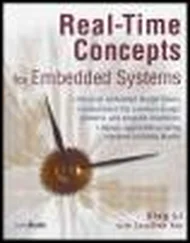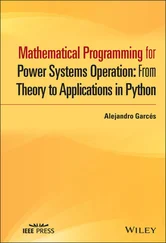Figure 3.1 Illustrations of the imaginary operator and the ghost operator.
Figure 3.2 The system pair that consists of the original system and its ghost.
Figure 3.3Illustration of the ghost power theory.
Figure 4.1Structure of an idealized three‐phase round‐rotor synchronous generator with p = 1, modified from (Grainger and Stevenson 1994, figure 3.4).
Figure 4.2The power part of a synchronverter is a basic inverter.
Figure 4.3The electronic part of a synchronverter without control.
Figure 4.4The electronic part of a synchronverter with the function of frequency and voltage control, and real and active power regulation.
Figure 4.5Operation of a synchronverter under different grid frequencies (left column) and different load conditions (right column).
Figure 4.6Experimental setup with two synchronverters.
Figure 4.7Experimental results in the set mode: output currents with 2.25 kW real power.
Figure 4.8Experimental results in the set mode: output currents (left column) and the THD of phase‐A current (right column) under different real powers.
Figure 4.9Experimental results in the droop mode: primary frequency response.
Figure 4.10Experimental results: the currents of the grid, VSG, and VSG2 under the parallel operation of VSG and VSG2 with a local resistive load.
Figure 4.11Real power P and reactive power Q during the change in the operation mode.
Figure 4.12Transient responses of the synchronverter.
Figure 5.1Structure of an idealized three‐phase round‐rotor synchronous motor.
Figure 5.2The model of a synchronous motor.
Figure 5.3PWM rectifier treated as a virtual synchronous motor.
Figure 5.4Directly controlling the power of a rectifier.
Figure 5.5Controlling the DC‐bus voltage of a rectifier.
Figure 5.6Simulation results when controlling the power.
Figure 5.7Simulation results when controlling the DC‐bus voltage.
Figure 5.8Experimental results when controlling the power.
Figure 5.9Experimental results when controlling the DC‐bus voltage.
Figure 6.1Integration of a PMSG wind turbine into the grid through back‐to‐back converters.
Figure 6.2Controller for the RSC.
Figure 6.3Controller for the GSC.
Figure 6.4Dynamic response of the GSC.
Figure 6.5Dynamic response of the RSC.
Figure 6.6Real‐time simulation results with a grid fault appearing at t = 6 s for 0.1 s.
Figure 7.1Conventional (DC) Ward Leonard drive system.
Figure 7.2AC Ward Leonard drive system.
Figure 7.3Mathematical model of a synchronous generator.
Figure 7.4Control structure for an AC WLDS with a speed sensor.
Figure 7.5Control structure for an AC WLDS without a speed sensor.
Figure 7.6An experimental AC drive.
Figure 7.7Reversal from a high speed without a load.
Figure 7.8Reversal from a high speed with a load.
Figure 7.9Reversal from a low speed without a load.
Figure 7.10Reversal from a low speed with a load.
Figure 7.11Reversal at an extremely low speed without a load.
Figure 7.12Reversal from a high speed without a load (without a speed sensor).
Figure 7.13Reversal from a high speed with a load (without a speed sensor).
Figure 8.1Typical control structures for a grid‐connected inverter.
Figure 8.2A compact controller that integrates synchronization and voltage/frequency regulation together for a grid‐connected inverter.
Figure 8.3The per‐phase model of an SG connected to an infinite bus.
Figure 8.4The controller for a self‐synchronized synchronverter.
Figure 8.5Simulation results: under normal operation.
Figure 8.6Simulation results: connection to the grid.
Figure 8.7Comparison of the frequency responses of the self‐synchronized synchronverter ( f ) and the original synchronverter with a PLL ( f with a PLL).
Figure 8.8Dynamic performance when the grid frequency increased by 0.1 Hz at 15 s (left column) and returned to normal at 30 s (right column).
Figure 8.9Simulation results under grid faults: when the frequency dropped by 1% (left column) and the voltage dropped by 50% (right column) at t = 36 s for 0.1 s.
Figure 8.10Experimental results: when the grid frequency was lower (left column) and higher (right column) than 50 Hz.
Figure 8.11Experimental results of the original synchronverter: when the grid frequency was lower than 50 Hz (left column) and higher than 50 Hz (right column).
Figure 8.12Voltages around the connection time: when the grid frequency was lower (left column) and higher (right column) than 50 Hz.
Figure 9.1Controlling the rectifier DC‐bus voltage without a dedicated synchronization unit.
Figure 9.2Controlling the rectifier power without a dedicated synchronization unit.
Figure 9.3Simulation results when controlling the DC bus voltage.
Figure 9.4Grid voltage and control signal.
Figure 9.5Grid voltage and input current.
Figure 9.6Simulation results when controlling the real power.
Figure 9.7Experiment results: controlling the DC‐bus voltage.
Figure 9.8Experiment results: controlling the power.
Figure 10.1Typical configuration of a turbine‐driven DFIG connected to the grid.
Figure 10.2A model of an ancient Chinese south‐pointing chariot (Wikipedia 2018).
Figure 10.3A differential gear that illustrates the mechanics of a DFIG, where the figure of the differential gear is modified from (Shetty 2013).
Figure 10.4The electromechanical model of a DFIG connected to the grid.
Figure 10.5Controller to operate the GSC as a GS‐VSM.
Figure 10.6Controller to operate the RSC as a RS‐VSG.
Figure 10.7Connection of the GS‐VSM to the grid.
Figure 10.8Synchronization and connection of the RS‐VSG to the grid.
Figure 10.9Operation of the DFIG‐VSG.
Figure 10.10Experimental results of the DFIG‐VSG during synchronization process.
Figure 10.11Experimental results during the normal operation of the DFIG‐VSG.
Figure 11.1Three typical earthing networks in low‐voltage systems.
Figure 11.2Generic equivalent circuit for analyzing leakage currents.
Figure 11.3Equivalent circuit for analyzing leakage current of a grid‐tied converter with a common AC and DC ground.
Figure 11.4A conventional half‐bridge inverter.
Figure 11.5A transformerless PV inverter.
Figure 11.6Controller for the neutral leg.
Читать дальше












